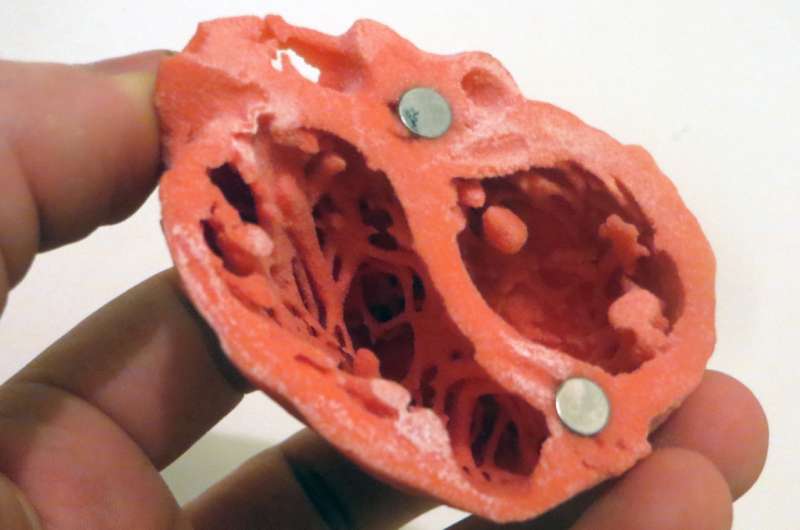This article has been reviewed according to Science X's editorial process and policies. Editors have highlighted the following attributes while ensuring the content's credibility:
fact-checked
trusted source
proofread
Natriuresis guided diuretic therapy found to increase natriuresis in acute heart failure patients

A pragmatic natriuresis guided diuretic approach in patients with acute heart failure significantly increases 24-hour natriuresis without impacting all-cause mortality or heart failure rehospitalization, according to late breaking research presented in a Hot Line session at ESC Congress 2023.
Principal investigator Dr. Jozine ter Maaten of the University Medical Centre Groningen said, "The PUSH-AHF trial provides the first randomized evidence supporting the natriuresis guided treatment approach advised in the ESC heart failure guidelines."
Hospitalization for acute heart failure is predominantly due to signs and symptoms of congestion, such as breathlessness, edema and fatigue. The primary goal is to get rid of the excess fluid, and the main treatment for this is loop diuretic therapy. However, a large number of patients have an insufficient response to diuretics, which is associated with residual congestion and an increased risk of mortality and heart failure rehospitalization.
In current practice, it is difficult to adequately and reliably monitor response to diuretics. Surrogate measures such as weight loss and net fluid output are typically used, but these are often unreliable and require waiting at least 24 hours after the start of diuretics for the first assessment. ESC guidelines recommend early and repeated assessment of spot urinary sodium in patients with acute heart failure to guide diuretic treatment, but to date there are limited, non-randomized data showing the usefulness of this approach.
The PUSH-AHF trial investigated the effectiveness of natriuresis guided diuretic therapy on natriuresis and clinical outcomes in patients with acute heart failure and provides the first randomized data on this proposed personalized treatment approach. Adult patients presenting with acute heart failure requiring treatment with intravenous loop diuretics were enrolled. The inclusion and exclusion criteria were intentionally broad to enroll a contemporary, representative, all-comer acute heart failure population.
Patients were randomized in a 1:1 ratio to natriuresis guided diuretic therapy or standard of care using electronic health records. In the natriuresis guided group, spot urinary sodium was determined at 2, 6, 12, 18, 24 and 36 hours after starting intravenous loop diuretics. Diuretic therapy was consequently intensified using a prespecified stepwise approach if response was insufficient (spot urinary sodium below 70 mmol and/or diuresis below 150 ml/hour).
Physicians were blinded to urinary sodium levels in the standard of care arm to prevent cross-over between treatment arms.
The study had two primary endpoints and p<0.025 for each was considered statistically significant: 1) 24-hour natriuresis, and 2) a combined endpoint of time to all-cause mortality or heart failure rehospitalization at 180 days.
A total of 310 patients were enrolled from the University Medical Centre Groningen, the Netherlands. The median age of the patients was 74 years and 45% were women. Natriuresis during the first 24 hours was significantly higher in the natriuresis guided versus standard of care group (409±178 vs. 345±202 mmol, respectively; p=0.0061).
The combined endpoint of time to all-cause mortality or first heart failure rehospitalization at 180 days occurred in 46 patients (31%) in the natriuresis guided group and in 50 patients (31%) in the standard of care group with no significant difference between groups (hazard ratio: 0.92; 95% confidence interval 0.62-1.38; p=0.6980).
Regarding secondary endpoints, natriuresis guided therapy resulted in increased 48-hour natriuresis (653±249 vs. 575±290 mmol; p=0.0241), 24-hour diuresis (3,900 [interquartile range (IQR) 3,200-4,945] vs. 3,330 [IQR 2,510-4,500] mL; p=0.0053), as well as 48-hour diuresis (6,655 [IQR 5,401-7,824] vs. 5915 [IQR 4,600-7,400] mL; p=0.0140). The length of hospital stay was not significantly different in the natriuresis guided group (6 [IQR 5-9] days) versus the standard of care group (7 [IQR 5-10 days]; p=0.1436).
Natriuresis guided therapy had a similar safety profile to standard of care and there was no difference in prespecified renal safety endpoints or worsening renal function.
Dr. ter Maaten said, "The results confirm the hypothesis that early, repeated assessment of urinary sodium and subsequent adjustments to diuretic treatment lead to better response. Although 180-day clinical outcome was not affected in this relatively small sample size, the strategy was safe and did not result in significant renal or electrolyte perturbations compared with standard of care."
"Clinicians should consider natriuresis guided diuretic therapy as a first step to a personalized treatment approach in patients with acute heart failure to improve decongestion."





















